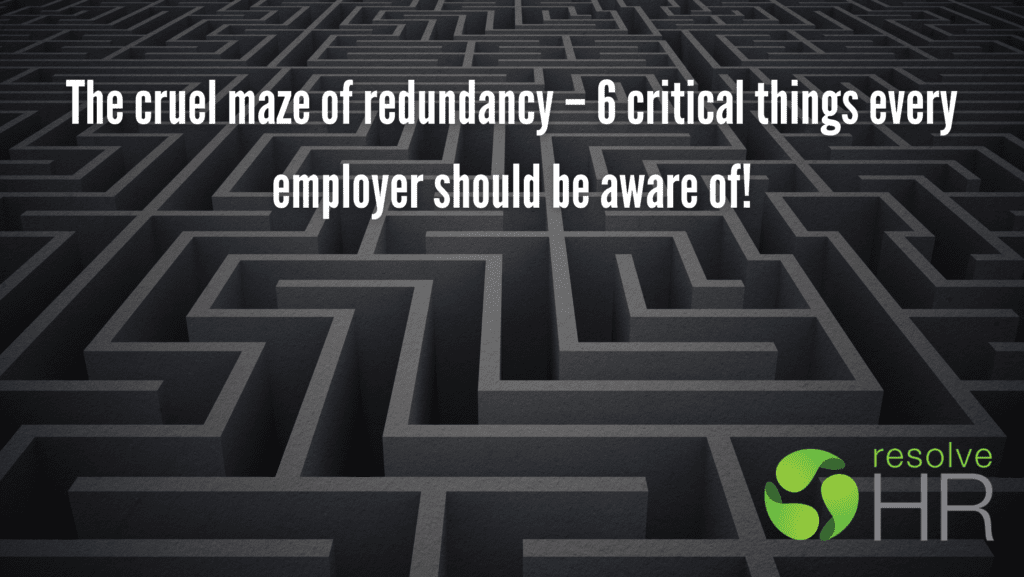
We have recently been working with several clients on guiding them through redundancy processes. The reasons might have occurred for one of several reasons; the business has taken a hit recently, the company may have been trying to raise capital and not raised as much as they would have hoped, or simply they are undergoing a rationalisation of the business.
In this article we answer the key considerations for business owners and leaders to note when looking to implement redundancies in Australia.
1. Compliance with employment laws and redundancy entitlements:
It should go without saying, but Employers should be aware of and ensure compliance with employment laws and regulations relevant to their employees when undertaking redundancies. This includes: adhering to notice period requirements; calculating and paying the appropriate amount of redundancy pay based on the employee’s years of service and age; and other legal obligations outlined in the Fair Work Act 2009, any relevant Awards as well as the state based Long Service Leave legislation. Employers should ensure that they understand and follow the applicable employment laws to avoid potential legal liabilities.
2. Fair selection process:
Employers need to ensure that the redundancies are ‘genuine’ and should ensure that their redundancy process is fair and transparent. Redeployment to alternative roles also needs to be considered. Depending on the scope of restructure and reduction, a fair selection process for determining which employees will be made redundant will need to consider factors such as skills, performance, and seniority, and avoiding any form of discrimination or bias. We would also recommend having solid documentation of the selection process and the reasons for selecting particular employees for redundancy for both record-keeping and potential legal purposes.
3. Redundancy Timeline, Plan and Process:
Regardless of the number of redundancies and scope of reductions, it’s important for the employer to have a co-ordinated timeline and plan which includes key factors such as: the timing of discussions with impacted employees and announcements to non-impacted employees, effective dates of restructures, how work will be handed over, and final working dates for those being made redundant.
4. Consultation and communication:
Employers are generally required to consult with affected employees and their representatives (such as unions or employee representatives) during the redundancy process. This includes providing information about the reasons for the redundancy, discussing potential alternatives, and considering employee feedback. A clear and predetermined communication plan for all employees (both impacted and non-impacted employees) throughout the redundancy process can help to minimise uncertainty, reduce loss of productivity and maintain a positive culture.
5. Outplacement support:
Some employers may choose to provide outplacement support to employees who are being made redundant. This can include career counselling, resume writing assistance, and job search support to help employees transition to new employment opportunities. Offering outplacement support can be seen as a positive gesture and can help maintain a good employer reputation, maintain employer branding and employee goodwill.
6. Employee assistance programs:
Redundancy can be a stressful time for employees, and offering access to employee assistance programs (EAPs) can be beneficial. EAPs provide to the affected employee a free, confidential counselling and support services to help employees cope with the emotional and psychological impacts of redundancy. We highly recommend that employers should consider providing access to EAPs to support the well-being of affected employees during the redundancy process.
Nick Hedges is the founder of Resolve HR, a Sydney-based HR consultancy specialising in providing workplace advice to managers and business owners. He recently published his first book, “Exiting underperforming Team Members – The Inside Scoop”. It is a practical response to the most pressing HR challenges, which can be found at https://resolvehr.com.au/.
Disclaimer: The contents written do not constitute legal advice and does not cater for individual circumstances. The information contained herein is not intended to be a substitute for legal advice and should not be relied upon as such.
